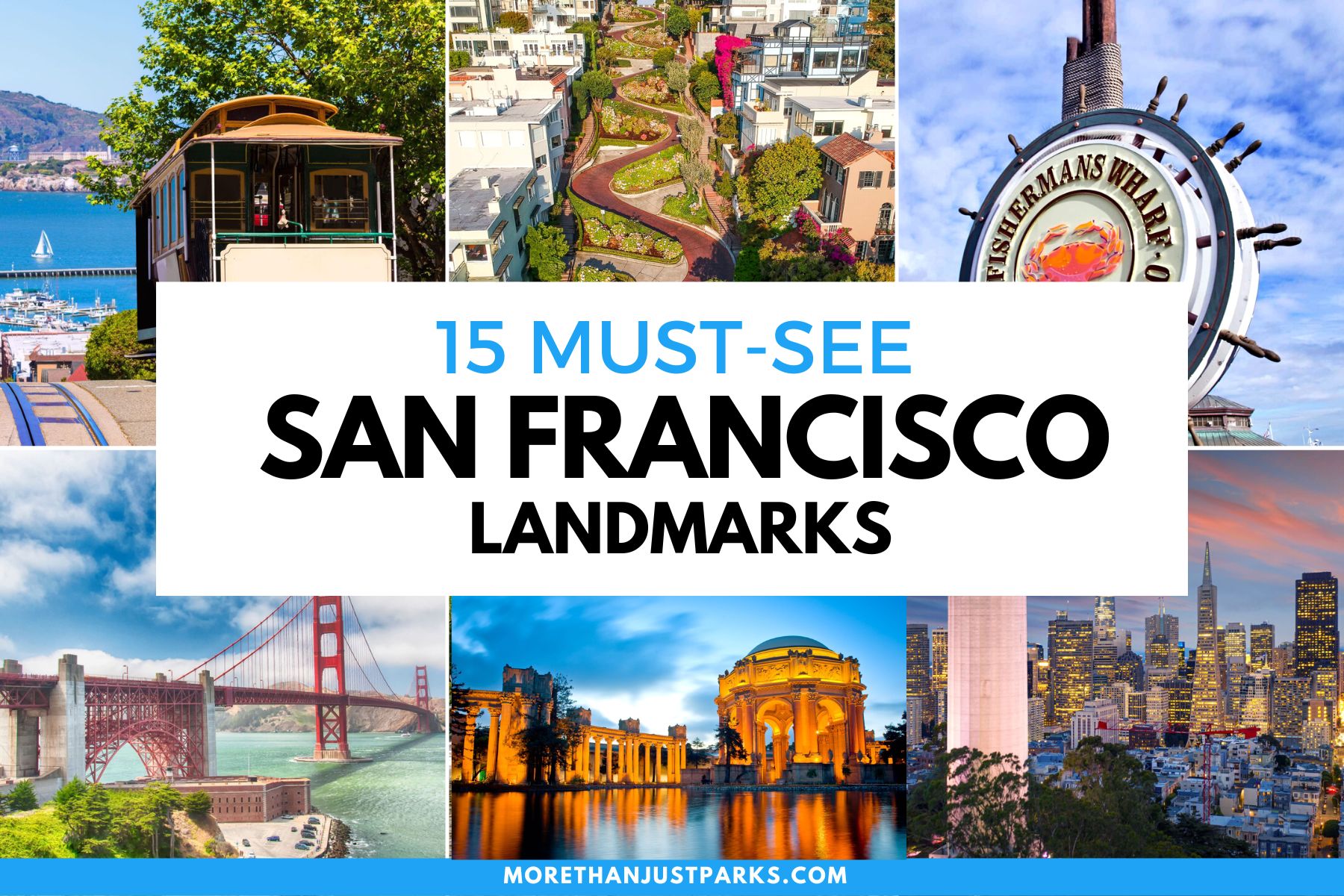
Article Summary: San Francisco Landmarks
San Francisco Landmarks. More Than Just Parks has 10 incredible must-see sites for you to visit.
There’s so much more to this exciting place than the Golden Gate Bridge. In this article, we’ll familiarize you with the incredible landmarks located in San Francisco.
We’ve got incredible places, iconic memorials, fascinating museums, epic monuments and so much more.
We’re going to give you our list of the Top 10 Landmarks In San Francisco.
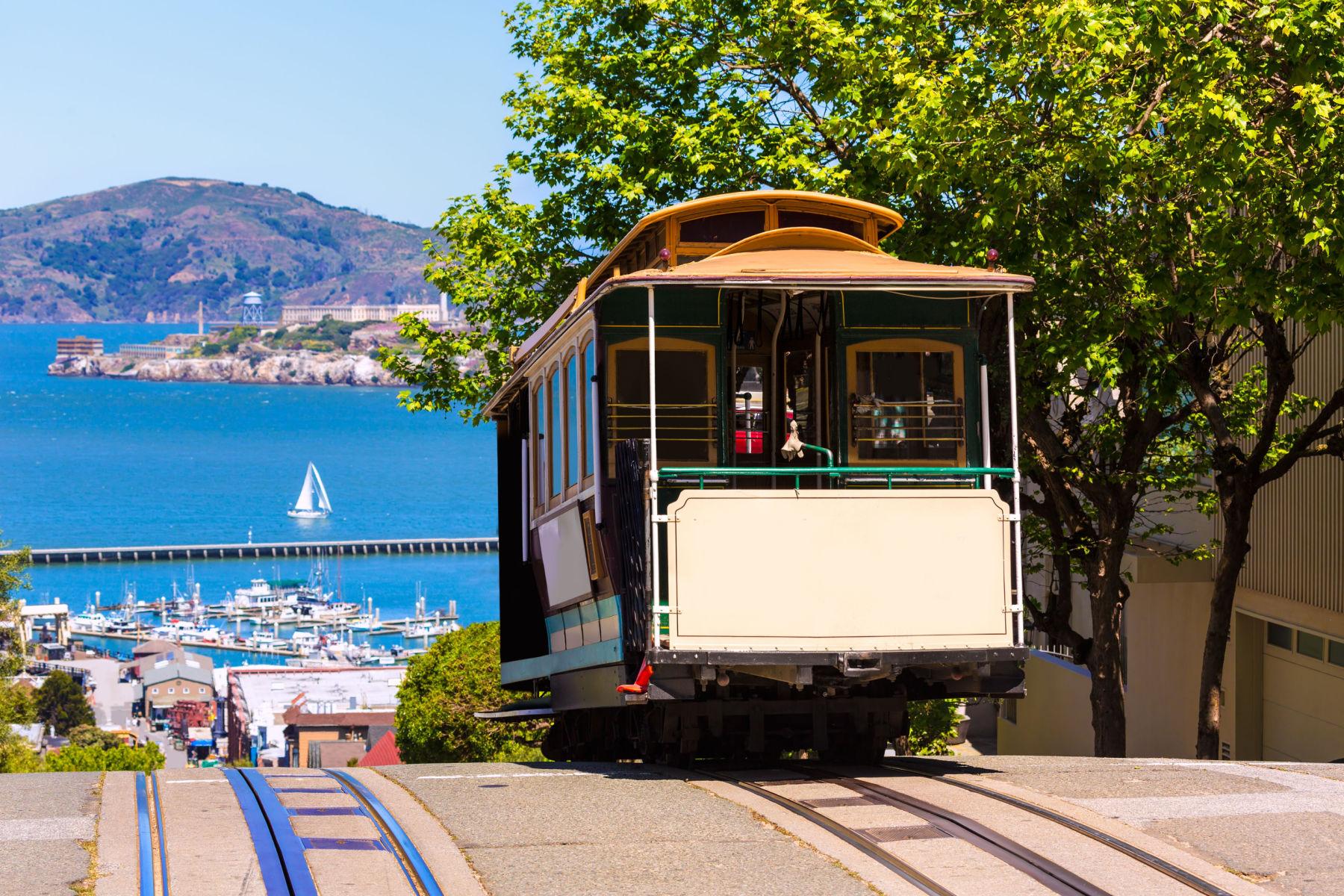
So, What Is A Landmark?
Well, it’s a place of “a special character or special historical or aesthetic interest or value as part of the development, heritage, or cultural characteristics of a city, state, or nation.”
Why visit these places? Because landmarks connect us to the past. Through visiting these wonderful places where history occurred we find our roots. It allows us to feel like we are a part of something much bigger than ourselves.
And, speaking of history, did I mention that I taught the subject? I spent a lifetime teaching about the history behind many of these wonderful places. Then I got to see them firsthand. And now I’m sharing the stories of these incredible places with you. It doesn’t get any better than that!
So, without further ado, let’s dive in.
Table Of Contents
San Francisco Landmarks
Some Fascinating Facts About San Francisco
- San Francisco is known for its hilly terrain, with over 50 hills within the city limits. The most famous hill is Nob Hill, known for its luxurious hotels and stunning views.
- The Golden Gate Bridge is one of the most iconic landmarks in San Francisco. It was completed in 1937 and spans 1.7 miles across the Golden Gate Strait, connecting San Francisco to Marin County.
- San Francisco is home to the largest Chinatown outside of Asia. The neighborhood covers 24 city blocks and is home to over 100,000 residents.
- Alcatraz Island, located in San Francisco Bay, was once a notorious federal prison that housed some of the country’s most notorious criminals, including Al Capone and Robert Stroud, aka the “Birdman of Alcatraz.” It’s now a popular tourist attraction.
- San Francisco is known for its cable cars, which are a fun and iconic way to get around the city. The cable car system is the world’s last manually operated cable car system, and it’s been in operation since the late 1800s.
- The city is home to several famous tech companies, including Twitter, Uber, and Airbnb, which were all founded in San Francisco.
- San Francisco has a rich history of counterculture and political activism. The city was a hub for the Beat Generation in the 1950s and the birthplace of the hippie movement in the 1960s.
- The Palace of Fine Arts, located in the Marina District, was built for the 1915 Panama-Pacific Exposition and is one of the only surviving structures from the event.
- San Francisco has a large LGBTQ+ community and is home to the first openly gay elected official in the United States, Harvey Milk.
- The city has a mild climate year-round, with temperatures rarely dipping below 50 degrees Fahrenheit. However, the city is known for its fog, which can roll in unexpectedly and create a stunning and eerie effect over the Golden Gate Bridge.

San Francisco from Twin Peaks | Courtesy of Wikimedia Commons
We’re Excited To Share Our List Of The Top 15 San Francisco Landmarks With YOU
San Francisco is chock-full of charming sidewalk cafes, stunning city parks, miles of hiking trails, breathtaking viewpoints, and some of the best restaurants you’ll find in America.
It’s also home to some amazing landmarks. More Than Just Parks is excited to share our list of the Top 15 San Francisco Landmarks with you. And we’re kicking off our list at #15 with the Painted Ladies.

Top 15 San Francisco Landmarks
15. The Painted Ladies
The “Painted Ladies” is a term used to describe a group of seven colorful Victorian-style houses located at 710 to 720 Steiner Street in San Francisco, California. These houses are also known as the “Seven Sisters” and are one of the most photographed and recognized landmarks in San Francisco. Those living in San Francisco will be used to flocks of tourists that frequent the area.
The houses were built in the 1890s during a period of rapid growth in San Francisco after the California Gold Rush. The Victorian architectural style was popular at the time, and many homes in the city were built in this style.
The houses on Steiner Street are notable for their unique color schemes and intricate details, including ornate woodwork and stained-glass windows.
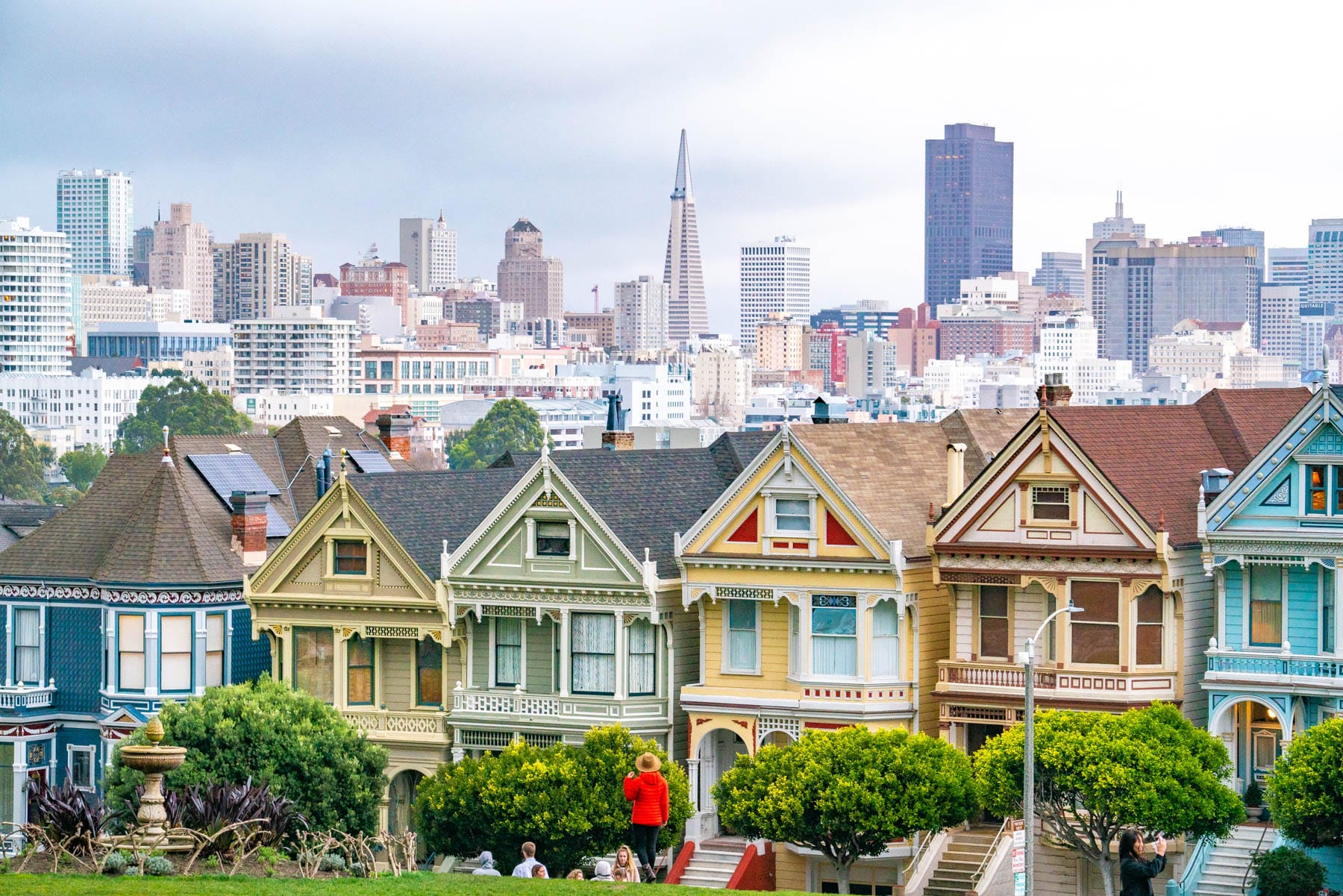
The Houses Were Originally Painted In A Variety Of Colors
The houses were originally painted in a variety of colors, but in the 1960s and 1970s, many of the homes in the area were painted in more neutral colors. The Painted Ladies stood out as a result, and their colorful appearance became even more prominent.
In the 1980s and 1990s, the Painted Ladies became a symbol of the city of San Francisco, appearing in countless photographs, postcards, and movies. The houses were also featured in the opening credits of the popular television show “Full House,” which aired from 1987 to 1995.
In recent years, the houses have become a popular tourist attraction, with visitors from around the world coming to see the Painted Ladies and take photographs. The houses have also been the subject of controversy, with some residents and preservationists concerned about the impact of tourism on the neighborhood.

14. Grace Cathedral
We move from an amazing collection of Victorian-style homes to an iconic cathedral. At #14 on our list of the Best San Francisco Landmarks is Grace Cathedral.
Grace Cathedral has a rich history dating back to the mid-19th century.
The first church on the site was built in 1849 during the California Gold Rush. It was a wooden structure known as Grace Church, and it served the growing population of San Francisco. However, the church was destroyed in a fire that swept through the city in 1906.
In 1910, plans were made to build a new cathedral on the site. The design was chosen through a competition, and the winning design was by Lewis P. Hobart, who had previously designed several other buildings in the city. Construction began in 1928, but the Great Depression delayed the project, and it was not completed until 1964.
It’s Known For Its Stunning Architecture
Grace Cathedral is known for its stunning architecture, including its French Gothic-style exterior and its intricate stained glass windows, which were designed by a variety of artists. The cathedral also features a replica of the Ghiberti Doors of the Florence Baptistery, which were created by Lorenzo Ghiberti in the 15th century.
The cathedral has played an important role in the history of San Francisco. During World War II, the cathedral served as a place of refuge for many people who were displaced by the war.
It also played a role in the Civil Rights Movement, with the cathedral’s dean, James A. Pike, being a vocal advocate for racial justice.
Today, Grace Cathedral is an important cultural institution in San Francisco. It hosts a variety of concerts, lectures, and other events, and it is known for its commitment to social justice and community outreach programs.
The cathedral is also a popular tourist destination, with visitors from around the world coming to admire its stunning architecture and learn about its history.
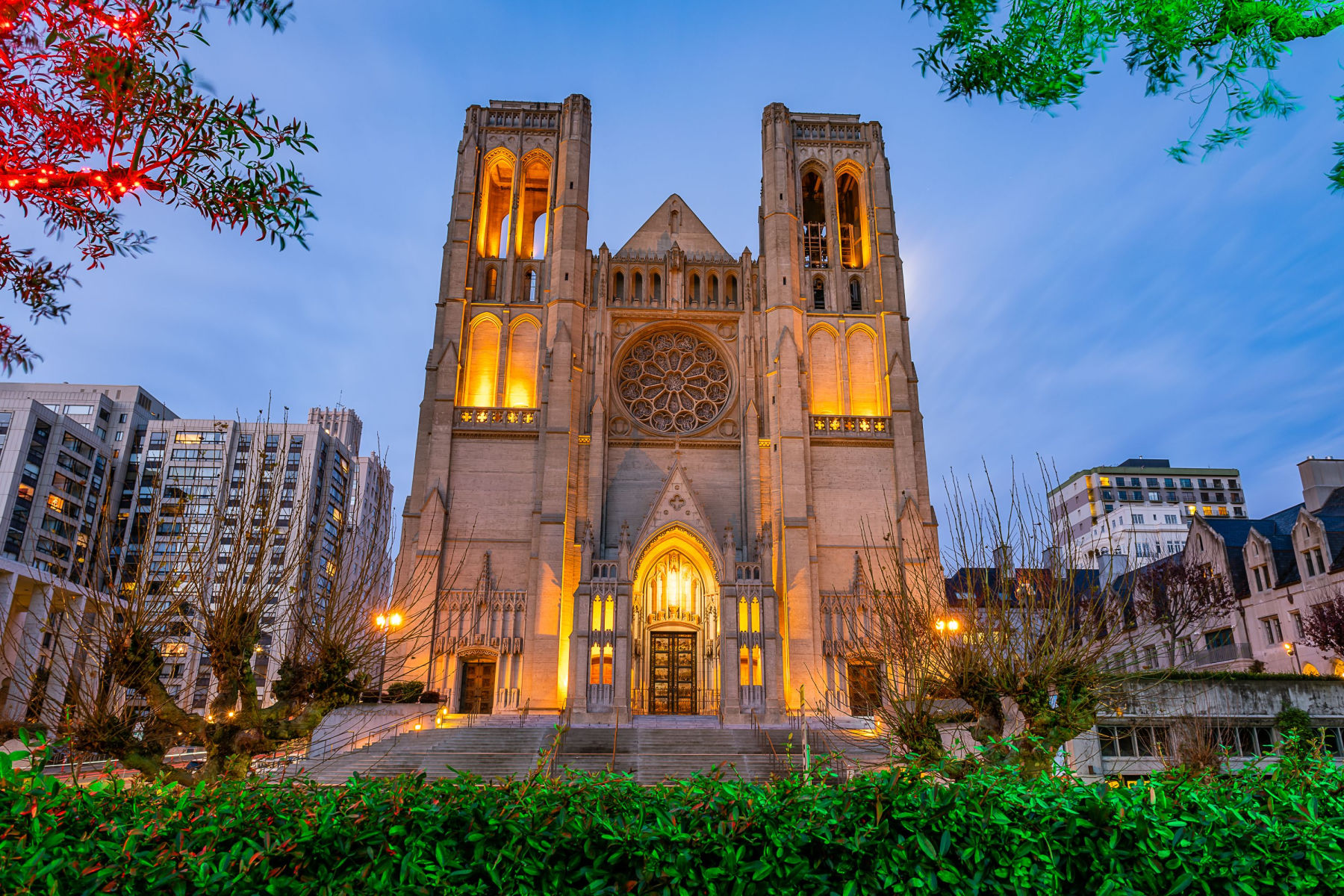
13. San Francisco Opera House
Our next San Francisco landmark is a 3,146-seat War Memorial Opera House, which is a California Historical Landmark. At #13 on our list of the Best San Francisco Landmarks is the San Francisco Opera House.
The original opera house was built in 1923 as part of the San Francisco War Memorial and Performing Arts Center. The building was designed by Arthur Brown Jr., who also designed San Francisco City Hall and the Coit Tower. The opera house was initially home to the San Francisco Opera, and it quickly became a popular venue for music lovers in the city.
In 1932, the opera house was damaged by a fire, and it was rebuilt and expanded over the next several years. The new building was designed by G. Albert Lansburgh, who added an Art Deco-style facade to the original building.
The renovated opera house was reopened in 1936 and was hailed as one of the most beautiful and acoustically perfect theaters in the world.

It Has Hosted Many Of The World’s Most Renowned Performers
Over the years, the San Francisco Opera House has hosted many of the world’s most renowned performers, including Maria Callas, Placido Domingo, and Luciano Pavarotti. The opera house has also been the site of many important cultural events, such as the signing of the United Nations Charter in 1945.
The opera house has undergone several renovations and upgrades over the years, including a major renovation in the 1990s that added state-of-the-art technical equipment and modern amenities while preserving the building’s historic features.
Today, the San Francisco Opera House continues to be one of the premier performing arts venues in the United States.
It’s home to the San Francisco Opera, the San Francisco Ballet, and the San Francisco Symphony, and it hosts a variety of other performances and events throughout the year. The opera house is a beloved cultural institution in San Francisco and a must-visit destination for music and theater lovers.
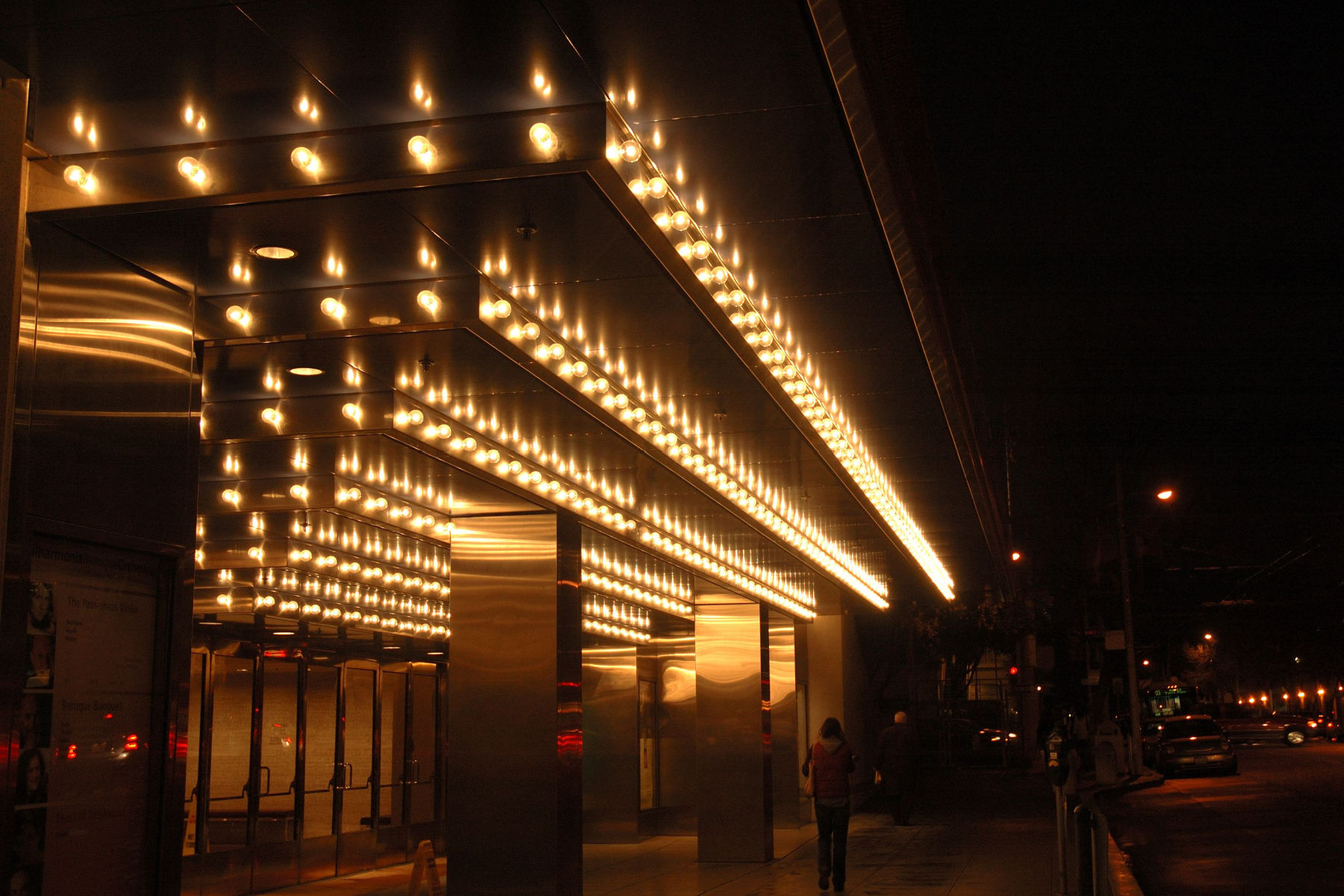
12. Ghirardelli Square
Our next San Francisco landmark is a full city block of 19th century brick buildings, formerly factories of various kinds, repurposed in the 1960’s into a charming collection of restaurants and shops. The buildings are arranged around a “square”, with a mermaid fountain and places to sit.
At #12 on our list of the Best San Francisco Landmarks is Ghirardelli Square. The square has a rich history dating back to the mid-19th century.
In 1849, Domenico Ghirardelli, an Italian chocolatier, arrived in San Francisco during the California Gold Rush. He established a successful chocolate and confectionery business in the city, and in 1893, he opened a chocolate factory and retail store at the corner of North Point and Larkin Streets.
The chocolate factory and retail store became a popular destination for tourists and locals alike, and the area around the factory became known as Ghirardelli Square. In the 1960s, the factory was moved to a larger location, and the original building was converted into a shopping and dining complex.

It Became A Popular Destination For Shopping, Dining & Entertainment
The redevelopment of Ghirardelli Square was led by San Francisco-based architect William F. Roth, who worked to preserve the historic character of the original building while modernizing the space. The complex was reopened in 1964 and quickly became a popular destination for shopping, dining, and entertainment.
Over the years, Ghirardelli Square has undergone several renovations and updates, including a major renovation in the 2000s that added new shops and restaurants while preserving the historic features of the building. Today, Ghirardelli Square is a popular destination for tourists and locals, offering a mix of shops, restaurants, and entertainment options in a unique and historic setting.
Ghirardelli Square is also home to the Ghirardelli Chocolate Company, which continues to produce high-quality chocolates and confections using the same recipes and techniques developed by Domenico Ghirardelli over 150 years ago.
The company’s chocolate is sold in the Ghirardelli Square retail store, as well as in stores and online retailers around the world.

11. San Francisco Museum Of Modern Art
Our next San Francisco landmark was the very first museum on the West Coast that was dedicated to modern and contemporary artwork. At #11 on our list of the Best San Francisco Landmarks is the San Francisco Museum of Modern Art, which has a collection of more than 25,000 different pieces of artwork.
The museum was founded in 1935 as the San Francisco Museum of Art and was originally housed in the War Memorial Veterans Building. The museum’s initial collection consisted of works by American artists, including paintings, sculptures, and decorative arts.
In the 1950s, the museum expanded its collection to include more contemporary works and began to exhibit works by European and Asian artists. By the 1960s, the museum had outgrown its original space and began planning a new building.
In 1995, SFMOMA moved into a new building designed by architect Mario Botta. The new building featured a distinctive postmodern design and provided more space for exhibitions and programming.
The museum continued to expand its collection, acquiring works by artists such as Jackson Pollock, Willem de Kooning, and Andy Warhol.

The Museum Underwent A Major Expansion & Renovation
In 2013, SFMOMA closed for a major expansion and renovation project. The project, which was designed by the architecture firm Snøhetta, added a new 10-story building to the museum and tripled the gallery space. The renovated museum reopened in 2016 and has since become a major cultural institution in San Francisco and a destination for art lovers from around the world.
Today, SFMOMA’s collection includes over 33,000 works of art, including paintings, sculptures, photographs, and other media. The museum’s permanent collection includes works by many of the most important artists of the 20th and 21st centuries, such as Frida Kahlo, Henri Matisse, Gerhard Richter, and Richard Serra.
SFMOMA also hosts a variety of temporary exhibitions, educational programs, and public events throughout the year, including lectures, screenings, and performances. The museum is a hub for contemporary and modern art in San Francisco and a vital part of the city’s cultural landscape.
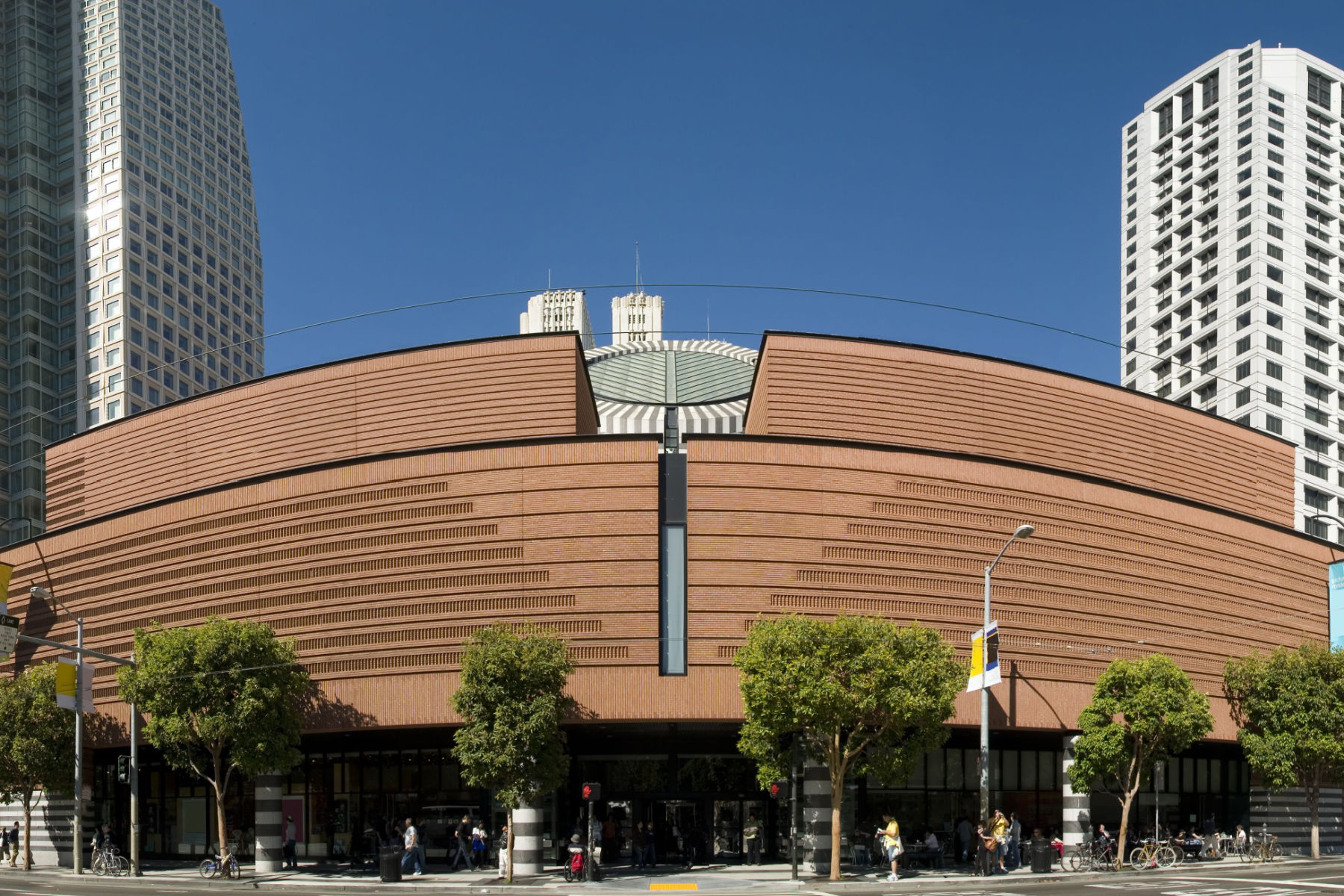
Some Of The Museum’s Highlights
Here are some of the highlights you may want to check out when visiting the museum:
- “Les Demoiselles d’Avignon” by Pablo Picasso: This groundbreaking painting is considered one of the most important works of the 20th century and helped to launch the Cubist movement.
- “Blue Nude” by Henri Matisse: This famous painting is one of Matisse’s most recognizable works and showcases his innovative use of color and form.
- “Ophelia” by Richard Hamilton: This iconic pop art painting was created in response to a famous photograph of actress Ophelia Parrish.
- “The Liberation of Aunt Jemima” by Betye Saar: This powerful assemblage sculpture challenges stereotypes and celebrates the strength and resilience of African American women.
- “Bridge” by Richard Serra: This massive sculpture is made of two towering steel plates that create a dramatic, immersive space for visitors to explore.
- “Untitled Film Stills” by Cindy Sherman: This series of photographs features the artist in a range of different cinematic roles, challenging conventional ideas of gender and identity.
- “Composition VIII” by Wassily Kandinsky: This abstract painting is a stunning example of Kandinsky’s use of color and geometric forms to express emotion and spirituality.
- “The Matter of Time” by Richard Serra: This series of monumental steel sculptures creates an immersive, labyrinthine environment for visitors to explore.
- “Moonrise, Hernandez, New Mexico” by Ansel Adams: This iconic photograph is one of Adams’ most famous works and captures the natural beauty of the American West.
- “Happenings” by Allan Kaprow: This interactive installation invites visitors to participate in a re-creation of a 1960s Happening, a type of performance art that was popular at the time.

Top 10 San Francisco Landmarks
10. Coit Tower and Telegraph Hill
We’re on to the Top 10 Best San Francisco Landmarks and, at #10, we have a two-for-one. It’s Coit Tower & Telegraph Hill.
Coit Tower is an iconic landmark located on top of Telegraph Hill in San Francisco, California. It was built in 1933 with funds donated by Lillie Hitchcock Coit, a wealthy San Franciscan who had a passion for the city’s firefighters.
The tower was designed by architects Arthur Brown Jr. and Henry Howard and is a distinctive example of Art Deco architecture.
Telegraph Hill, the location of Coit Tower, has a rich history dating back to the early days of San Francisco. The hill was named for the semaphore telegraph that was once used to communicate with ships entering the San Francisco Bay.
During the Gold Rush era, Telegraph Hill was home to a vibrant community of Italian immigrants who built many of the homes and gardens that still line its steep streets.
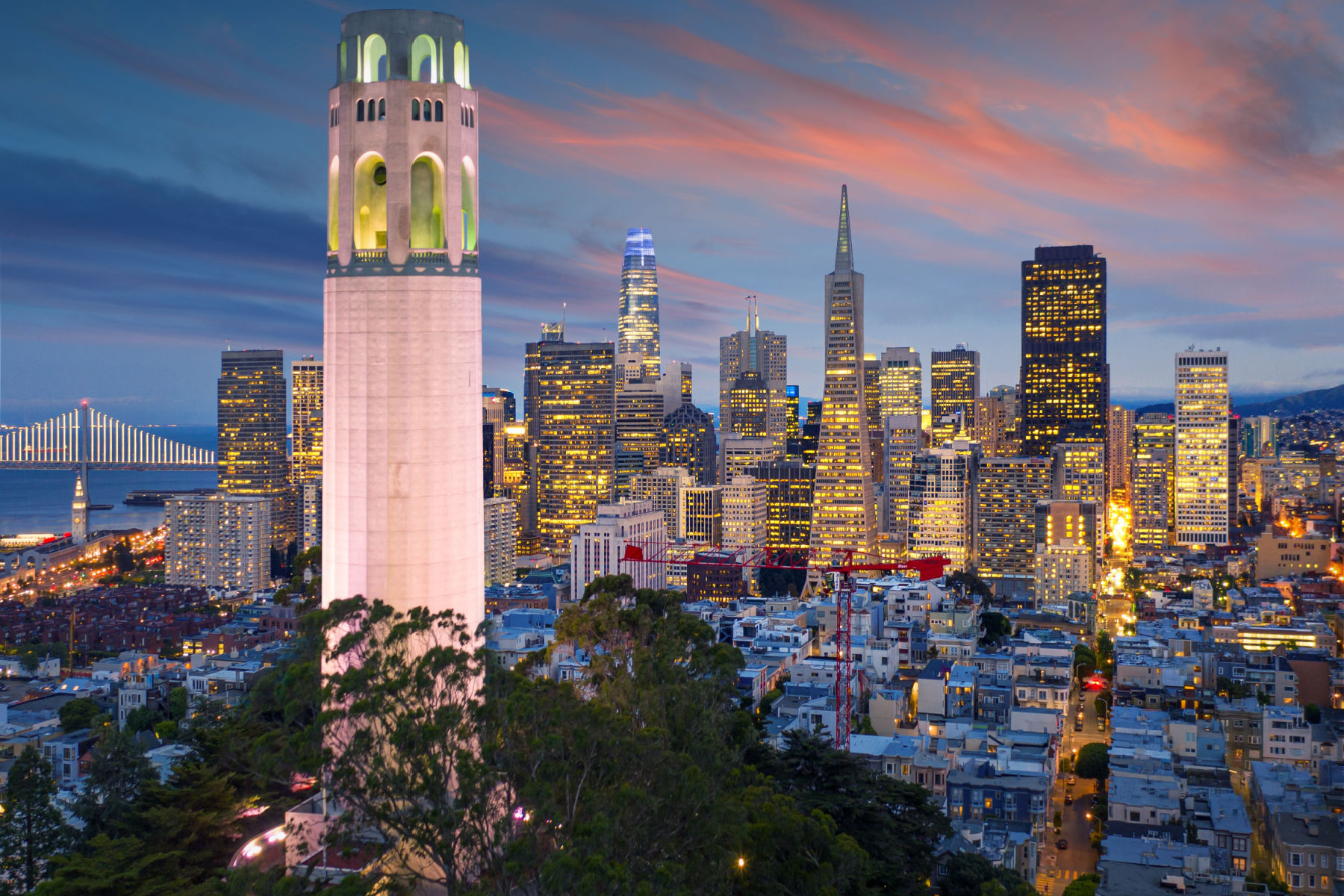
Lillie Hitchcock Coit
Lillie Hitchcock Coit, a San Francisco socialite, was an enthusiastic supporter of the city’s firefighters and often accompanied them on calls. When she died in 1929, she left a large bequest to the city, requesting that the funds be used for the beautification of San Francisco. A portion of the funds were used to build Coit Tower as a tribute to the city’s firefighters.
The tower is 210 feet tall and offers panoramic views of San Francisco and the Bay Area. The interior of the tower features a series of murals that depict scenes from California history, created by a group of artists who were part of the Public Works of Art Project. The murals were controversial at the time of their creation due to their left-leaning political content, but they have since become recognized as important examples of New Deal-era art.
Today, Coit Tower is a popular tourist destination and a symbol of San Francisco’s unique history and culture. It is visited by thousands of people each year who come to enjoy the views from the tower and to see the historic murals inside.
The surrounding Telegraph Hill neighborhood remains a vibrant and diverse community, with a mix of historic homes, gardens, and shops, and continues to be an important part of San Francisco’s cultural heritage.
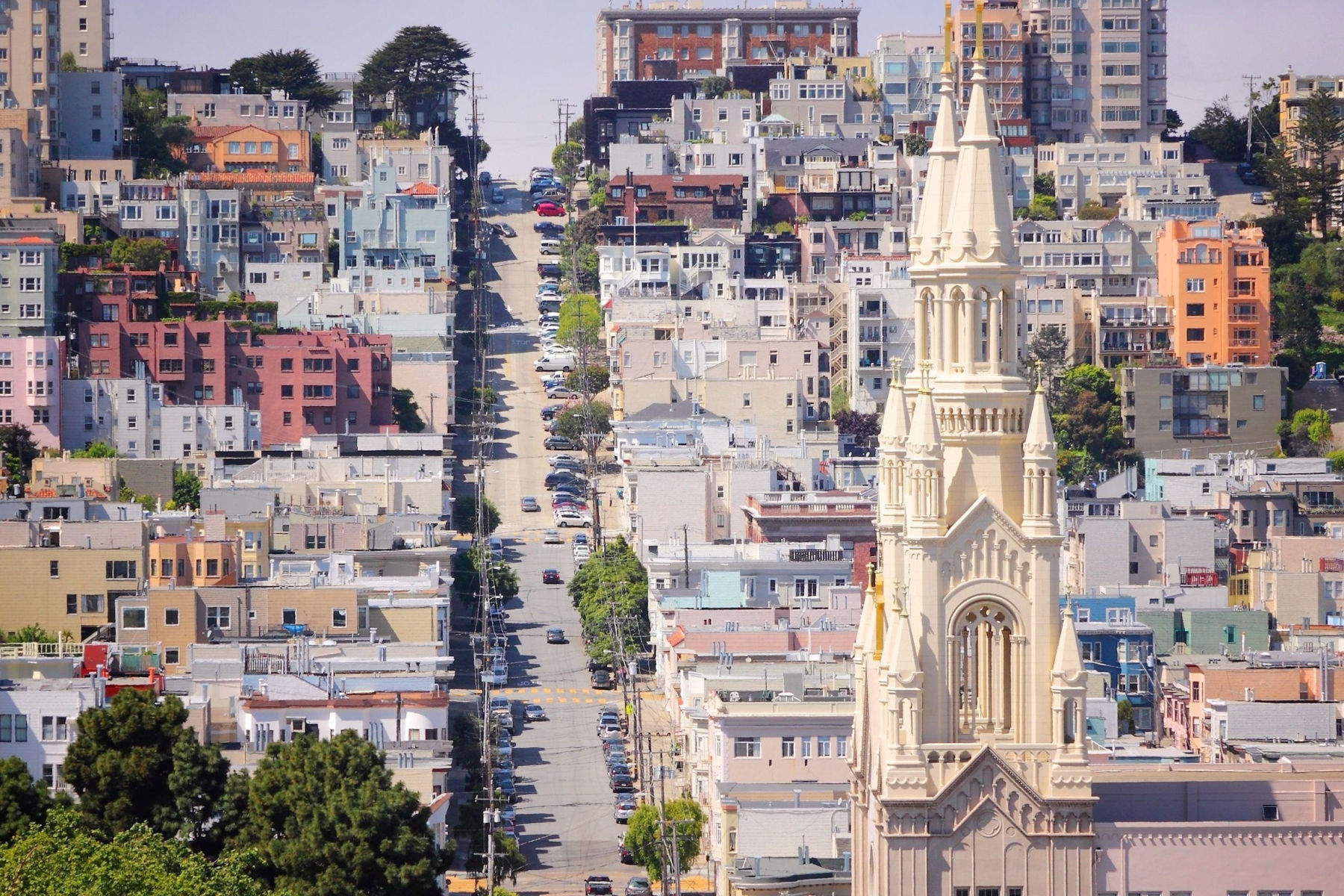
9. Chinatown
Our next San Francisco landmark contains the largest Chinese population outside of Asia. At #9 on our list of the Best San Francisco Landmarks is Chinatown.
San Francisco’s Chinatown is one of the oldest and most vibrant Chinese communities outside of Asia. The neighborhood’s history dates back to the mid-19th century, when the first Chinese immigrants arrived in San Francisco in search of work and a better life.
In the early days, Chinatown was located near the city’s port and served as a hub for Chinese laborers who worked in nearby industries like mining, agriculture, and railroads. Discrimination against the Chinese community was rampant, with many facing violence, racism, and economic exploitation.
Despite these challenges, the community persisted and grew, with new immigrants arriving and forming tight-knit communities based on language, regional origin, and cultural traditions. Chinatown became a center for Chinese culture and commerce, with bustling streets filled with shops, restaurants, and other businesses catering to the community’s needs.
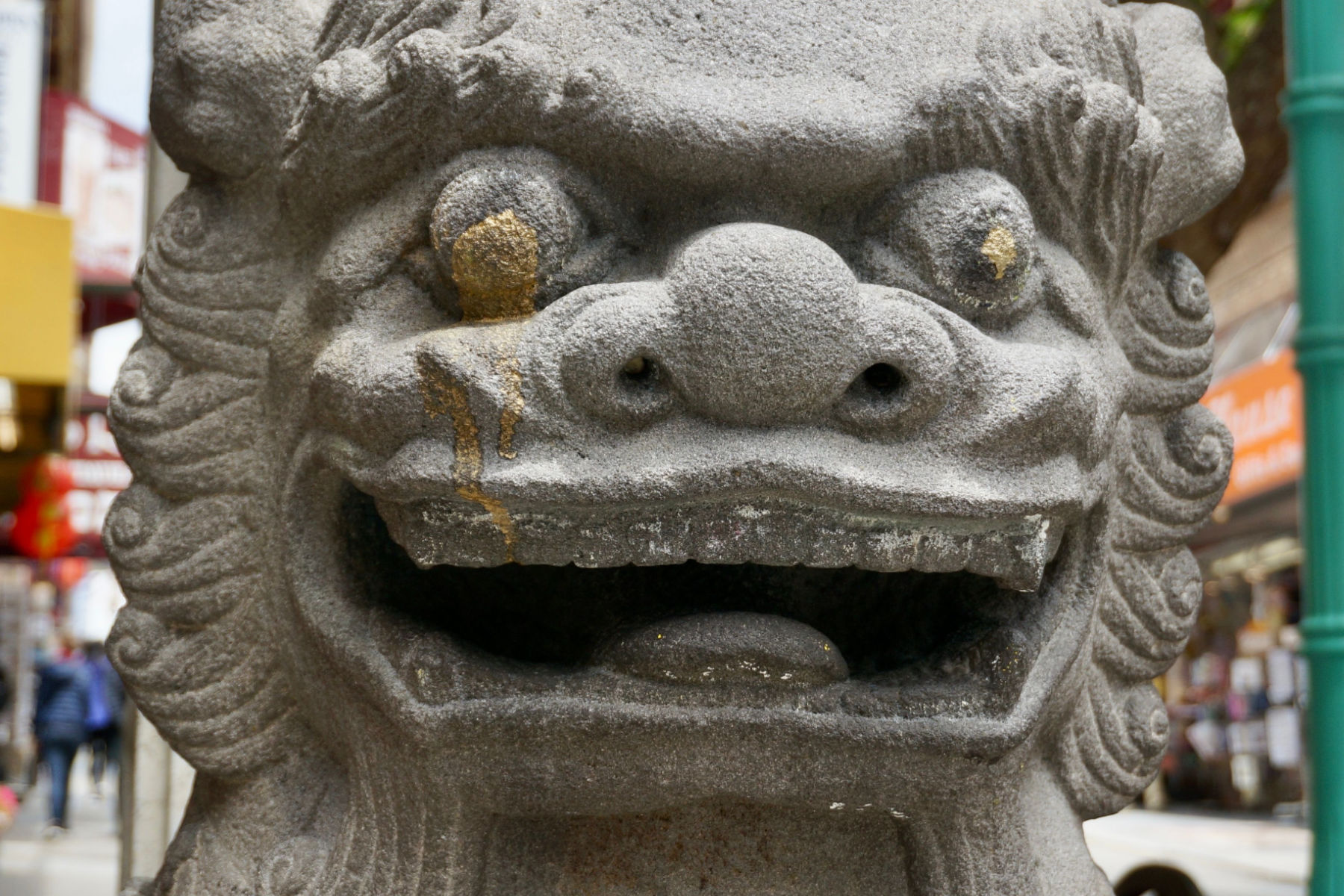
A Destination For Non-Chinese Visitors
Over time, Chinatown also became a destination for non-Chinese visitors, who were fascinated by the neighborhood’s unique culture and customs. As the community grew and flourished, it also faced new challenges, including the forced relocation of residents during the 1906 earthquake and subsequent fire, as well as ongoing discrimination and harassment from outside forces.
Today, San Francisco’s Chinatown remains a vibrant and thriving community, with a population of more than 30,000 people and a rich cultural heritage that is celebrated throughout the city.
Visitors can explore the neighborhood’s narrow streets, colorful markets, and historic landmarks like the iconic Dragon Gate, the Chinese Historical Society of America, and the Chinese Consolidated Benevolent Association.
Chinatown also hosts numerous cultural events and festivals throughout the year, including the Chinese New Year Parade, the Autumn Moon Festival, and the Chinatown Street Fair.
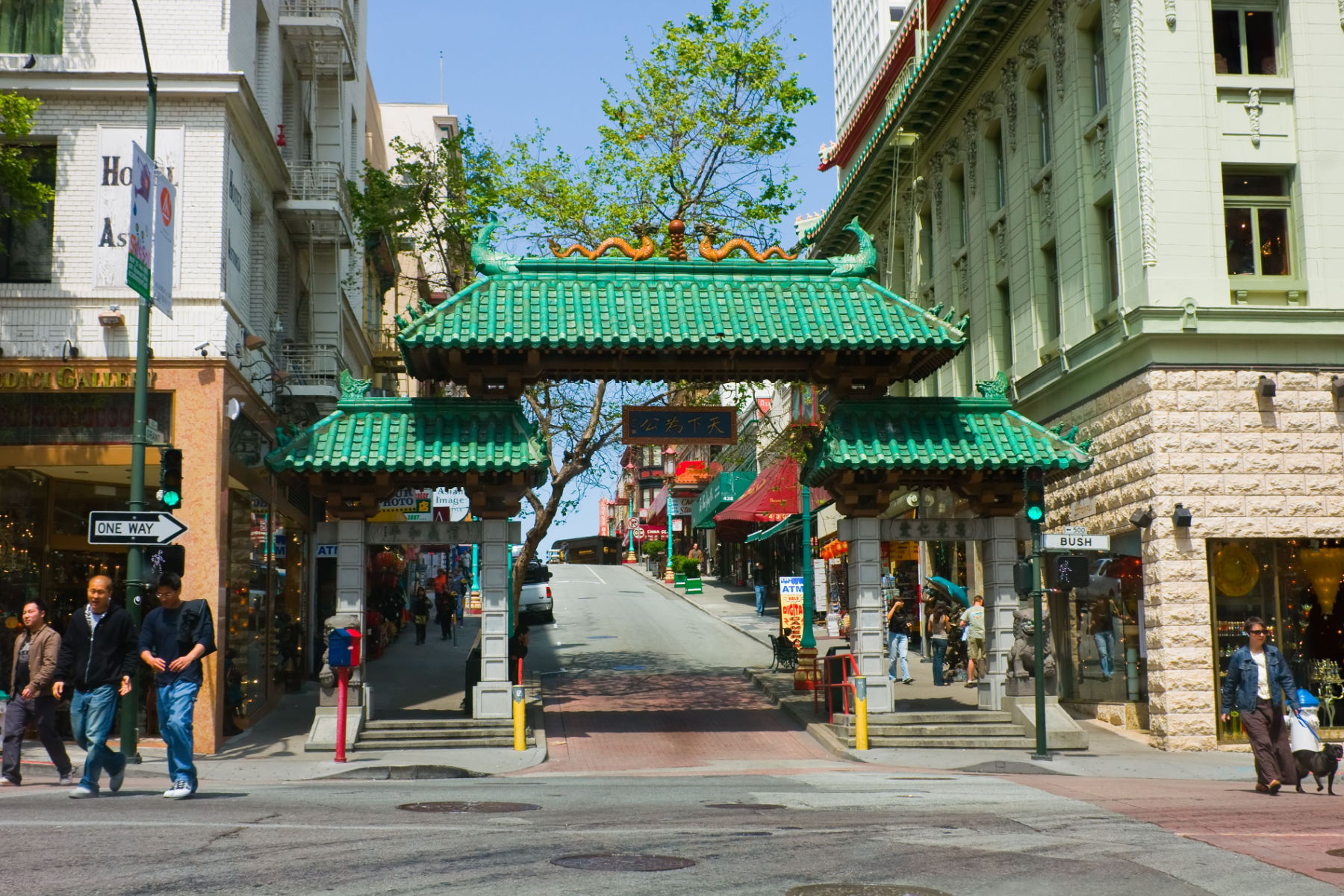
Chinatown In The Movies
San Francisco’s Chinatown has been portrayed in many movies over the years, often as a vibrant and bustling neighborhood with a rich cultural heritage. Here are some common themes and portrayals of Chinatown in the movies:
- Bustling streets and markets: Many movies show the crowded streets and busy markets of Chinatown, with colorful storefronts, street vendors, and the hustle and bustle of daily life. These scenes often capture the energy and vitality of the neighborhood.
- Cultural traditions: Chinatown is known for its unique cultural traditions, including its cuisine, music, and festivals. Many movies showcase these traditions, such as the annual Chinese New Year parade, lion dances, and martial arts performances.
- Gangs and crime: Some movies portray Chinatown as a place where gangs and organized crime operate, with themes of violence, corruption, and betrayal. These portrayals often focus on the darker side of the neighborhood.
- Mysticism and spirituality: Chinatown is also known for its mystical and spiritual traditions, including Chinese astrology, feng shui, and Taoism. Some movies explore these themes and use them to add an element of mystery and intrigue to the story.

Lion Dance in Chinatown | Courtesy of Wikimedia Commons
Things To Do In Chinatown
San Francisco’s Chinatown is a vibrant and bustling neighborhood with plenty to see and do. Here are some things to consider:
- Explore the Streets: Walk through Chinatown’s narrow and bustling streets, which are lined with traditional shops, restaurants, and markets. You can also find herbalists, tea shops, and vendors selling fresh produce.
- Visit the Dragon Gate: The Dragon Gate, located at the entrance of Chinatown, is a landmark that symbolizes the Chinese community’s strength and resilience. It is also a popular spot for photos.
- Visit a Fortune Cookie Factory: You can visit a fortune cookie factory and watch as they are made. You can also purchase custom fortune cookies with your own message.
- Enjoy Dim Sum: Dim sum is a popular meal in Chinatown and involves small portions of a variety of foods, often served in steamer baskets. Try one of the many dim sum restaurants in the area.
- Visit a Temple: Visit one of the neighborhood’s many temples, including the Tin How Temple, the oldest in San Francisco.
- Shop for Souvenirs: Chinatown is a great place to shop for unique souvenirs and gifts, including jade jewelry, Chinese silk, and other cultural treasures.
- Attend a Festival: Chinatown hosts a number of festivals throughout the year, including the Chinese New Year Parade, Autumn Moon Festival, and the Chinatown Street Fair.
- Take a Walking Tour: Join a walking tour of Chinatown, which will provide an in-depth look at the neighborhood’s history, architecture, and cultural significance.
8. San Francisco Maritime National Historical Park
Our next San Francisco landmark includes a magnificent fleet of historic ships, a Visitor Center, Maritime Museum, Maritime Research Center, and Aquatic Park Historic District. At #8 on our list of the Best San Francisco Landmarks is the San Francisco Maritime National Historical Park.
The park headquarters and Maritime Research Center are located in Fort Mason, some 10 minutes walk to the west of the other sites.
The Beach and Hyde Street terminal of the San Francisco cable car system adjoins the main site, while the Jones Street terminal of the F Market historic streetcar line is some 5 minutes walk to the east.

Things To See
- A fleet of historic vessels are moored at Hyde Street Pier, an extension of Hyde Street. The ships are open to visitors year-round. A short, level walk to the end of the pier rewards visitors with great views of San Francisco Bay.
- The Visitor Center, located across the street from Hyde Street Pier, features information and award-winning exhibits.
- Just outside the Visitor Center is an open, grassy area overlooking the Aquatic Park cove and beach with access to the water’s edge. Visitors can see breathtaking views to the north of San Francisco Bay, Alcatraz Island, the Golden Gate Bridge, and Sausalito in Marin County.
- Two blocks away from the Visitor Center is the Maritime Museum in the Aquatic Park Bathhouse building.
- The Maritime Research Center, located in Fort Mason Center, is a 10-minute walk from Hyde Street Pier through Aquatic Park. Appointments are required. (Source: NPS)
7. Lombard Street
Next up is the most crooked street in the world. At #8 on our list of the Best San Francisco Landmarks is Lombard Street. It’s known for the one-way block on Russian Hill between Hyde and Leavenworth Streets, where eight sharp turns are said to make it the most crooked street in the world.
The history of Lombard Street dates back to the late 19th century when the city was experiencing rapid growth and development.
In the early days of San Francisco, many of the city’s streets were designed with steep grades to accommodate horse-drawn carriages and cable cars. However, as cars became more popular in the early 20th century, these steep grades proved to be too difficult to navigate.
In 1922, a resident of Lombard Street, Carl Henry, proposed a unique solution to the problem. He suggested creating a switchback road that would wind down the steep hill, making it easier for cars to navigate.
The Street Was Re-Engineered With 8 Switchbacks
The city embraced Henry’s idea, and work began on the project in 1922. The street was re-engineered with eight switchbacks, or hairpin turns, and was completed in 1923.
Over the years, Lombard Street became a popular tourist destination, attracting visitors from all over the world who come to see the street’s unique design and take pictures of the scenic view from the top of the hill.
Today, Lombard Street remains a popular attraction in San Francisco, with visitors flocking to the street to see its unique design and take in the stunning views of the city. It is also a residential area, with homes lining the street, many of which have become historic landmarks.
The street is closed to vehicular traffic during peak tourist season, allowing visitors to walk down the crooked section of the road and experience the famous switchbacks firsthand.
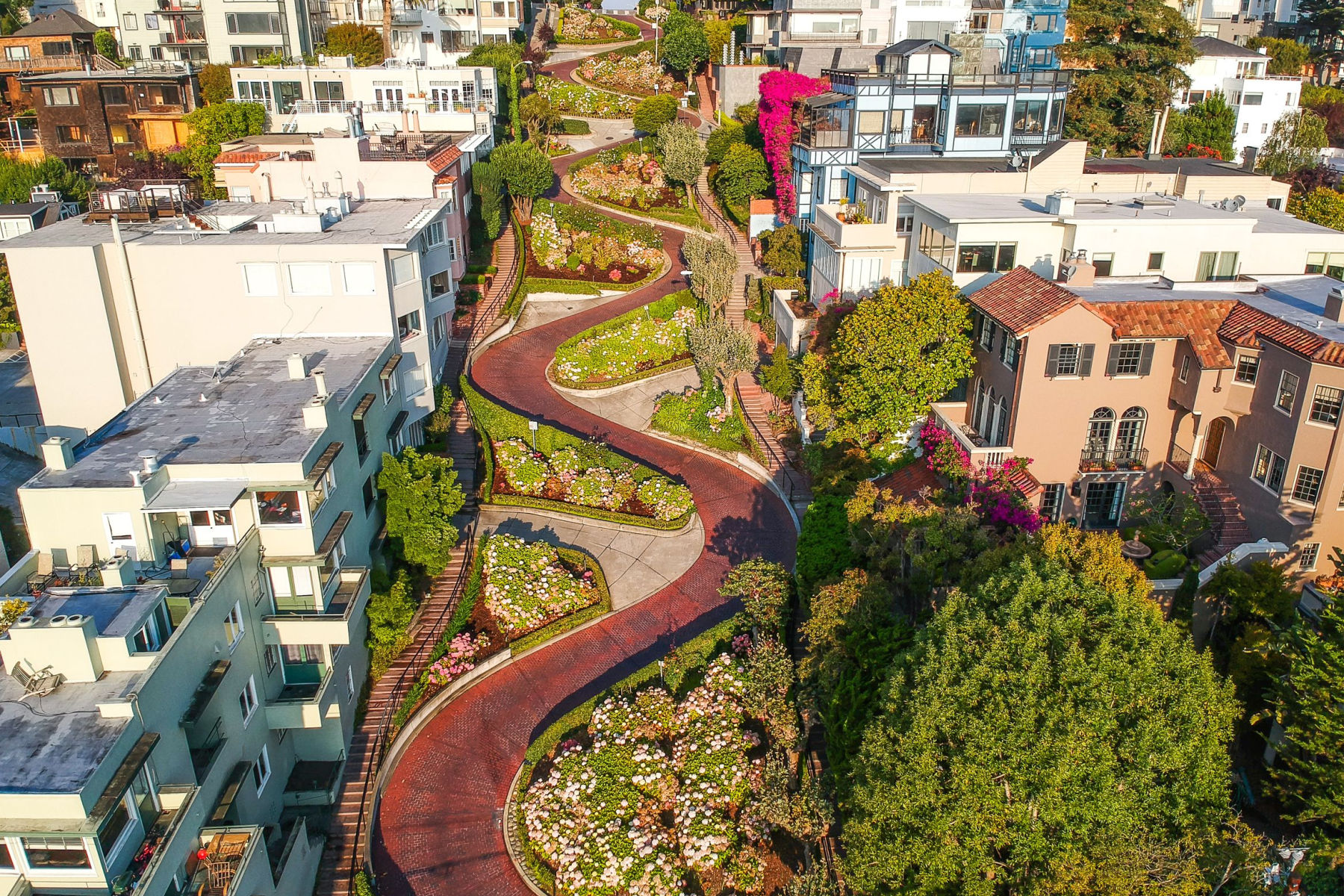
6. Fort Point National Historic Site
Our next San Francisco landmark has been called “the pride of the Pacific,” “the Gibraltar of the West Coast,” and “one of the most perfect models of masonry in America.” At #6 on our list of the Best San Francisco Landmarks is Fort Point National Historic Site.
The fort has a rich and storied history, dating back to the mid-19th century.
Construction of the fort began in 1853, following the California Gold Rush, as part of a system of coastal defense to protect the Bay Area from foreign invasion. The fort was built at the request of U.S. Army engineers who recognized the strategic importance of the location at the Golden Gate.

Fort Point National Historic Site | Courtesy of Wikimedia Commons
The Fort Completed In Time For The Start Of The Civil War
The fort was completed in 1861, just in time for the start of the American Civil War. During the war, Fort Point served as a crucial defensive position for Union forces, protecting the entrance to the San Francisco Bay.
In the years following the Civil War, Fort Point remained an active military fortification, although its strategic importance diminished with the advent of more advanced weaponry. The fort saw action during World War II, when it was used to defend against potential attacks by Japanese forces.
In 1970, Fort Point was designated a National Historic Site, recognizing its historical and cultural significance. Today, visitors can explore the fort’s underground tunnels and gun emplacements, learn about its history, and take in stunning views of the Golden Gate Bridge and the San Francisco Bay.
Fort Point National Historic Site is also home to a museum, which tells the story of the fort and its role in American history. The museum features exhibits on the fort’s construction, the Civil War, and its role in the defense of San Francisco Bay during World War II.
Visitors can also learn about the soldiers who served at the fort and the challenges they faced while stationed there.

Top 5 San Francisco Landmarks
5. The Presidio
We’re on to our Top 5 San Francisco landmarks. Our next landmark has served as a military reservation from its establishment in 1776 as Spain’s northern-most outpost of colonial power in the New World. It was one of the longest-garrisoned posts in the country and the oldest installation in the American West.
At #5 on our list of the Best San Francisco Landmarks is The Presidio.
The Presidio was originally founded by Spanish explorers in 1776 as a military fortification to protect the northern coast of California from foreign invaders. It was named “El Presidio Real de San Francisco” and served as the northernmost outpost of the Spanish empire in the New World.
In the early 1800s, the Presidio was transferred to Mexican control after Mexico gained independence from Spain. The Mexican army used the Presidio as a base of operations during the Mexican-American War in 1846-48.

Street map of 1937 of the Army Base | Courtesy of Wikimedia Commons
The Presidio Was Taken Over By The U.S. Army
After the United States acquired California in 1848, the Presidio was taken over by the U.S. Army and continued to serve as a military installation. During the Civil War, the Presidio served as a recruitment and training center for Union troops, and later became a key defense post during World War I and World War II.
In the post-war era, the Presidio became a center for military intelligence and was the site of several high-profile Cold War operations, including the development of the U-2 spy plane. However, with the end of the Cold War, the Presidio’s military importance declined and it was eventually decommissioned as an active military base in 1994.
Today, the Presidio is a national park and cultural center that preserves and celebrates the history and natural beauty of the San Francisco Bay Area. The park features museums, art galleries, restaurants, and recreational opportunities, as well as numerous historic landmarks and buildings that offer a glimpse into the Presidio’s rich and diverse past.

4. Palace Of Fine Arts
Our next San Francisco landmark is the only remaining structure from 1915 Panama-Pacific International Exposition, a historic World’s Fair-style event that put San Francisco back on the map as a major global city after the devastation of the 1906 earthquake and fire.
At #4 on our list of the Best San Francisco Landmarks is the Palace of Fine Arts.
It was originally constructed for the Panama-Pacific International Exposition in 1915, which was a world’s fair held to celebrate the completion of the Panama Canal and to showcase San Francisco’s recovery from the devastating 1906 earthquake and fire.
The Palace was designed by the renowned architect Bernard Maybeck, who was inspired by Greek and Roman architecture and sought to create a monumental structure that would evoke a sense of awe and wonder in visitors.
The Palace was built using temporary materials such as wood and plaster, and was intended to be demolished after the fair was over.
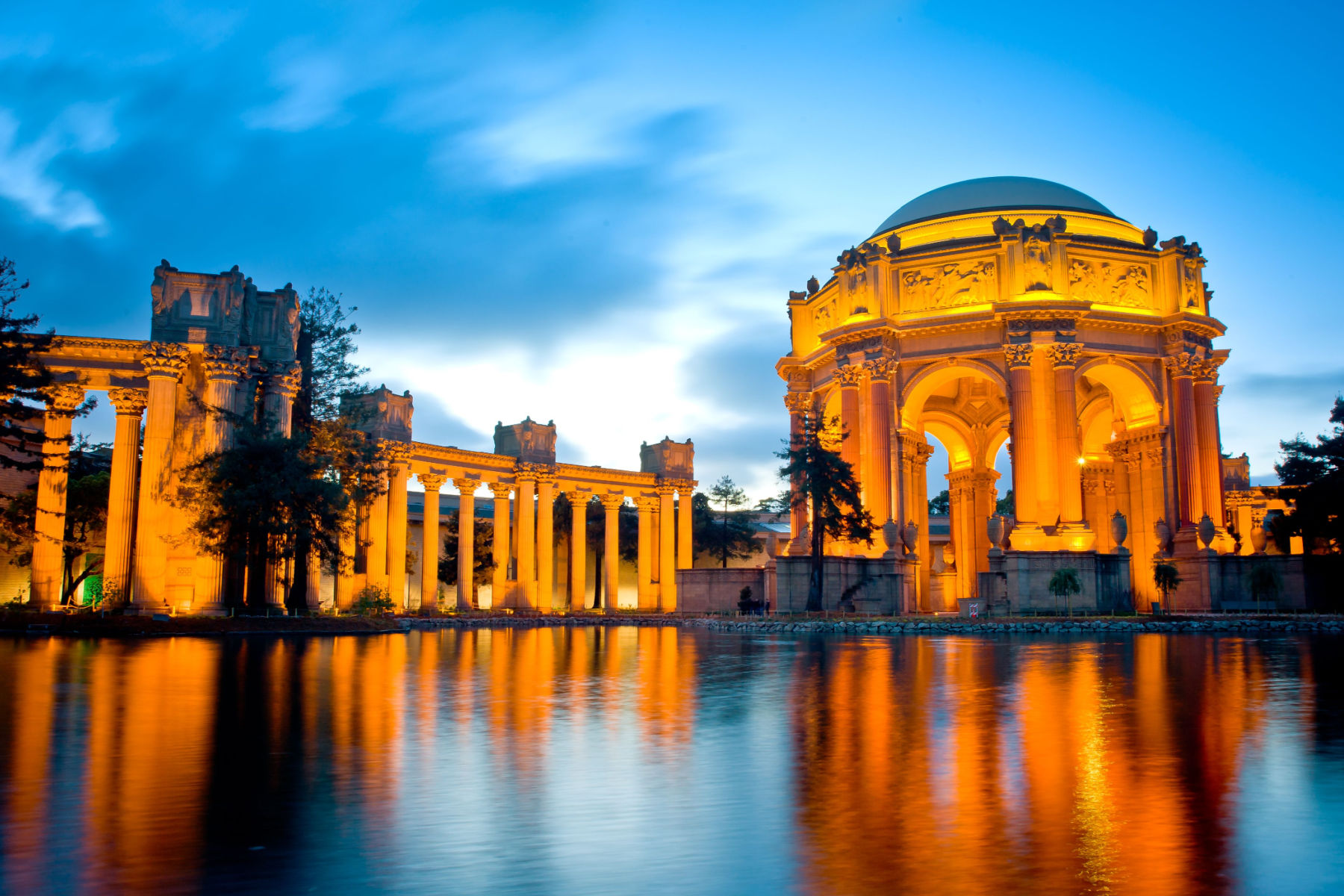
The Palace Proved To Be Quite Popular
However, the Palace proved to be so popular that it was saved from demolition and became a permanent fixture in San Francisco. In the years after the fair, the Palace fell into disrepair and was nearly demolished several times, but was ultimately restored and renovated in the 1960s and 1970s.
Today, the Palace of Fine Arts is a popular destination for tourists and locals alike, and is used for a wide variety of cultural and artistic events. The Palace’s stunning Beaux-Arts architecture and serene lagoon make it a favorite spot for wedding photos, and it is also home to a theater, art galleries, and several restaurants.
The Palace has been featured in numerous films, TV shows, and advertisements, and is widely regarded as one of the most beautiful and unique structures in San Francisco.
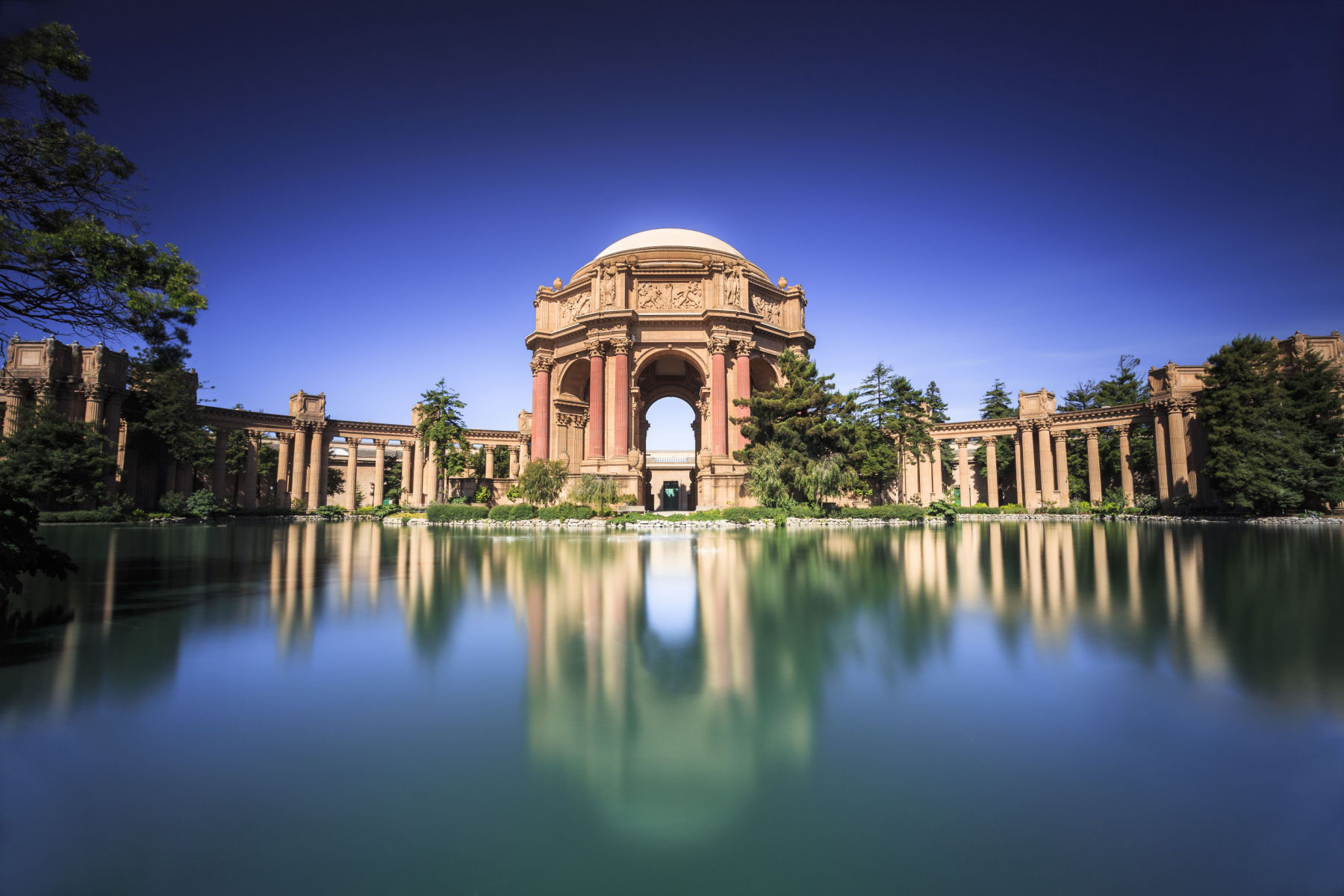
3. Fisherman’s Wharf
Our next San Francisco landmark is best known for being the location of Pier 39, great waterfront restaurants, Ghirardelli Square, San Francisco Maritime Museum, Musée Mécanique, the Cannery Shopping Center, a Ripley’s Believe it or Not museum, the Wax Museum.
At #3 on our list of the Best San Francisco Landmarks is Fisherman’s Wharf.
Fisherman’s Wharf began as a hub for the fishing industry in the late 19th and early 20th centuries. Italian immigrants, primarily from the Ligurian region of Italy, were among the first to settle in the area and establish fishing businesses.
In the early 1900s, the San Francisco fishing industry experienced a boom, and Fisherman’s Wharf became a bustling hub of activity. Fishermen would bring their daily catch to the wharf, which was then sold to local markets and restaurants.
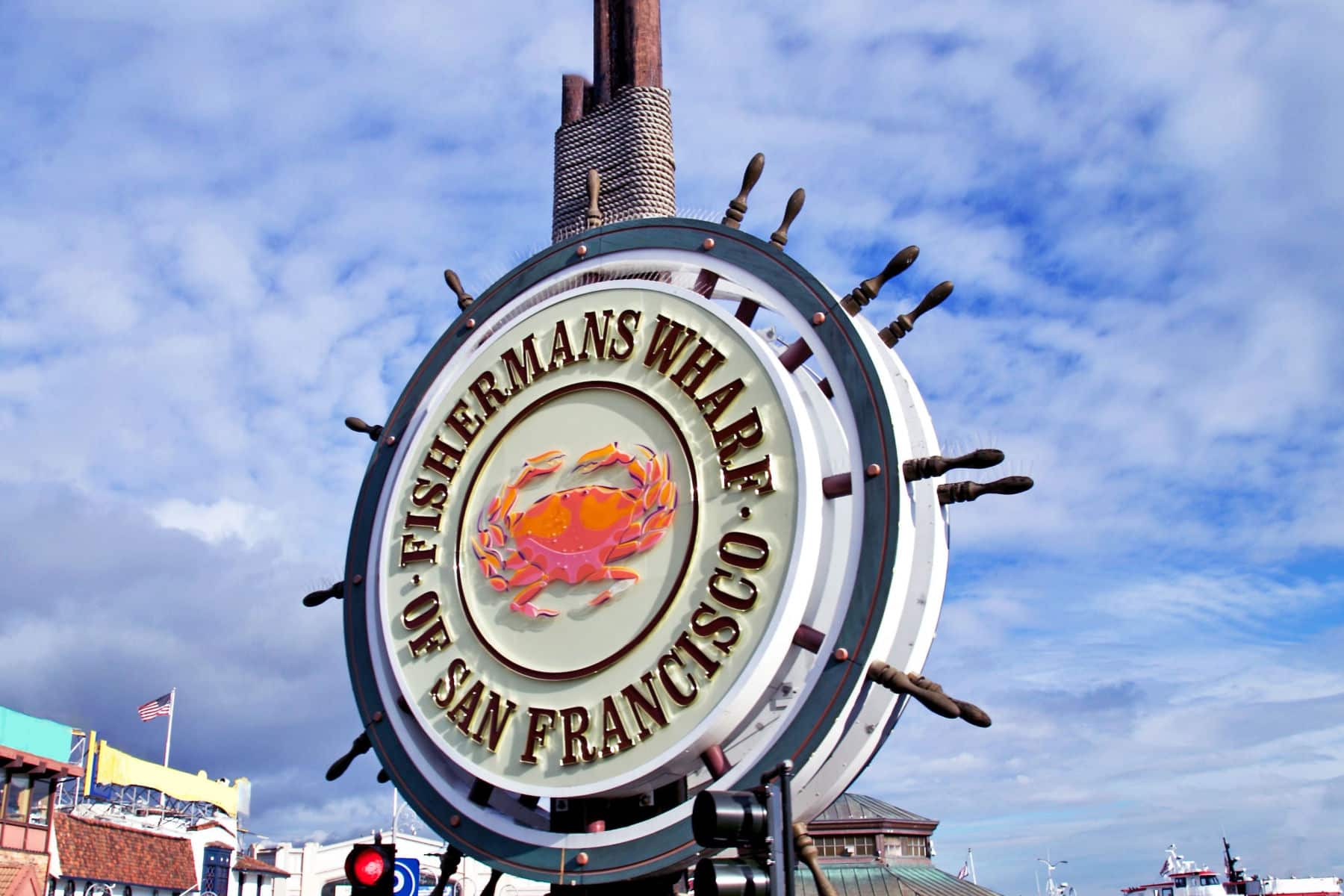
Fisherman’s Wharf Played A Critical Role In World War Two
During World War II, Fisherman’s Wharf played a critical role in the war effort, as it was used as a base for the Pacific Fleet and as a shipping hub for supplies and troops.
In the post-war years, Fisherman’s Wharf became a popular tourist destination, with seafood restaurants, souvenir shops, and other attractions catering to visitors. The Wharf was also home to several historic ships, including the Balclutha, a 19th-century sailing vessel that is now part of the San Francisco Maritime National Historical Park.
Today, Fisherman’s Wharf remains a popular tourist destination, known for its fresh seafood, lively atmosphere, and picturesque views of the San Francisco Bay. Visitors can sample local specialties such as clam chowder, crab cakes, and Dungeness crab, as well as explore the area’s many museums, galleries, and other attractions.
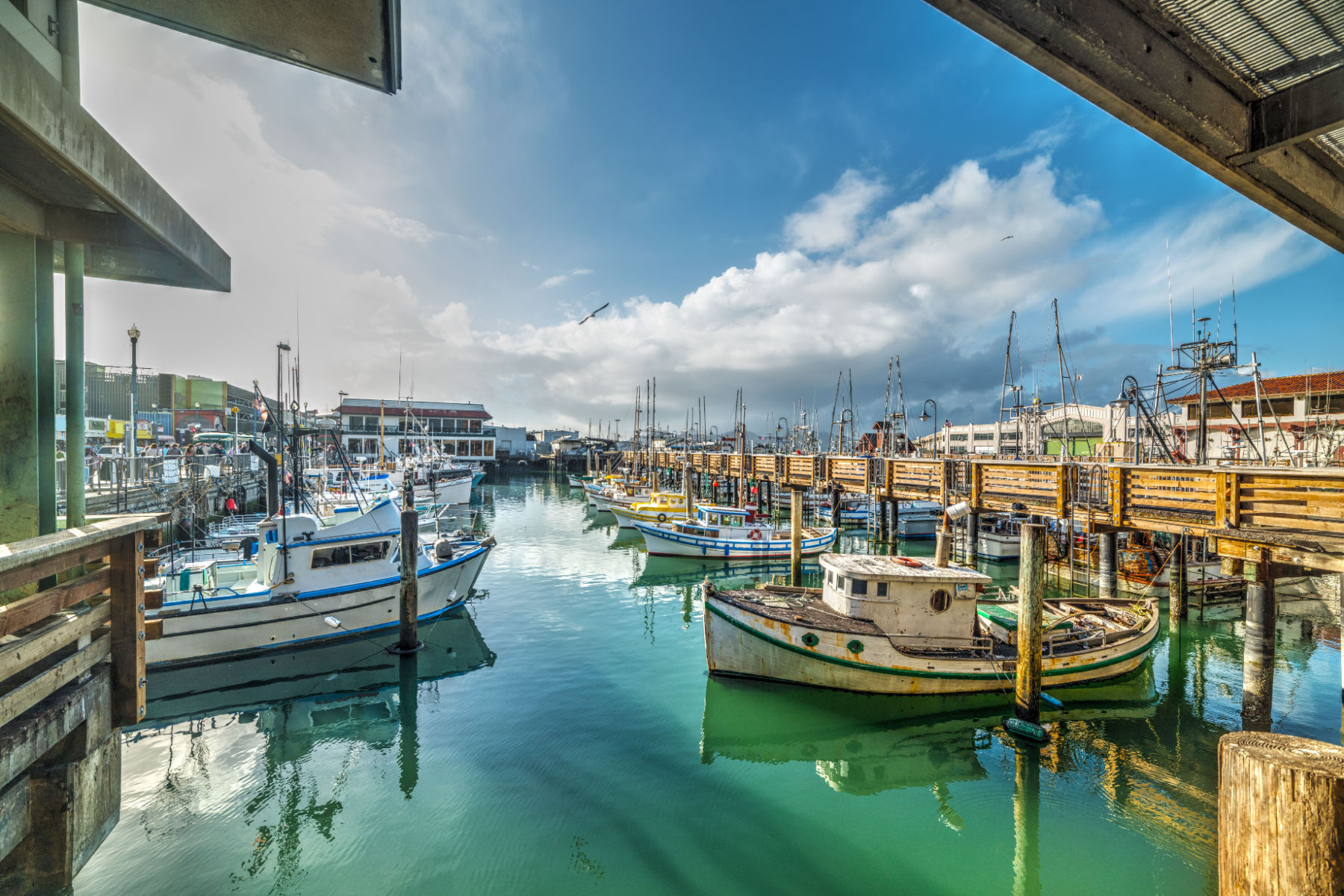
2. Alcatraz Island
We’re down to our final 2 San Francisco landmarks. In the runner-up spot at #2 is a place which was once a fort, a military prison, and a maximum security federal penitentiary.
In 1969, the Indians of All Tribes occupied it for 19 months in the name of freedom and Native American civil rights. Welcome to Alcatraz Island.

Located on a lonely island in the middle of San Francisco Bay, Alcatraz—aka “The Rock”—had held captives since the Civil War. But it was in 1934, the high point of a major war on crime, that Alcatraz was re-fortified into the world’s most secure prison.
As the National Park Service notes, “Alcatraz reveals stories of American incarceration, justice, and our common humanity. This small island was once a fort, a military prison, and a maximum security federal penitentiary.”
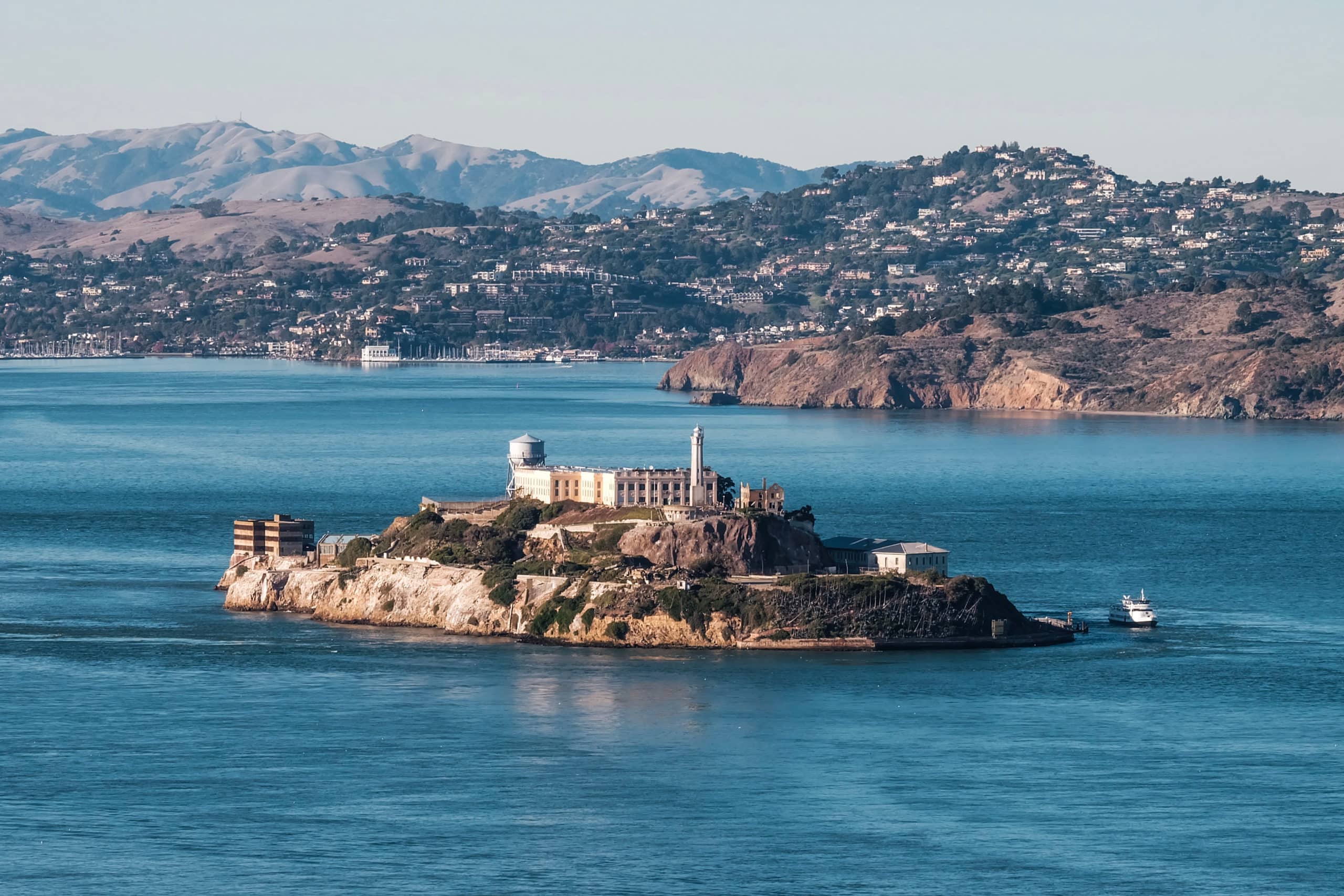
The Birdman Of Alcatraz
The Birdman of Alcatraz was a nickname given to Robert Stroud, an American federal prisoner who was incarcerated at Alcatraz Island, a maximum-security federal prison located in San Francisco Bay.
Contrary to popular belief, Stroud did not become known as the Birdman because he kept birds while in prison. Instead, he gained his knowledge of ornithology and wrote two books on the subject while serving time in federal prisons.
Before his time in Alcatraz, Stroud was imprisoned for killing a man in Alaska in 1909. While in prison, he became interested in canaries and their breeding habits. He eventually became an expert on bird diseases and published several papers on the subject.
Stroud’s reputation as the Birdman grew when he was transferred to Alcatraz in 1942. While there, he was not allowed to keep birds, but he continued to write about them and became an advocate for their conservation.
Stroud served a total of 54 years in prison, most of it in solitary confinement. He died in a federal prison hospital in Missouri in 1963 at the age of 73.
Escape From Alcatraz
The first known escape attempt from Alcatraz occurred in 1936 when Joe Bowers tried to swim to shore. He was quickly caught by prison guards.
The most famous escape attempt from Alcatraz happened in 1962. Three inmates, Frank Morris and brothers John and Clarence Anglin, spent months planning their escape. They crafted fake heads out of soap, toilet paper, and hair clippings to place in their beds to fool the guards.
On the night of June 11, they crawled through the ventilation system and made it to the roof. From there, they climbed down a drainpipe to the ground, and using rafts made from raincoats, they attempted to cross the bay to freedom.
Despite an extensive manhunt, the three escapees were never found. It is widely believed that they drowned in the cold and turbulent waters of San Francisco Bay. However, some theories suggest that they might have made it to shore and lived out their lives in hiding.
In total, there were 14 known escape attempts from Alcatraz, involving 36 inmates. Most of these attempts were unsuccessful, and many of the inmates were captured, wounded, or killed in the process. The prison was closed in 1963 due to the high cost of maintenance and its reputation for being inescapable.

Alcatraz Prison | Courtesy of Wikimedia Commons
While You’re There Check Out the Big Lockup, Alcatraz
The Big Lockup: Mass Incarceration in the United States, is an exciting new exhibit which examines Alcatraz Island as a military prison and federal penitentiary within the context of incarceration in the U.S. where currently 2.3 million people are behind bars, more than any other country in the world.
The exhibit takes a look at the disproportionate number of people of color, low literacy and those born into poverty that are in jail and prison.
It looks at who is harmed, who bears the costs and how we can deter and prevent people from being put back into the system. Finally, The Big Lockup asks: Is there a better way? (Source: NPS)
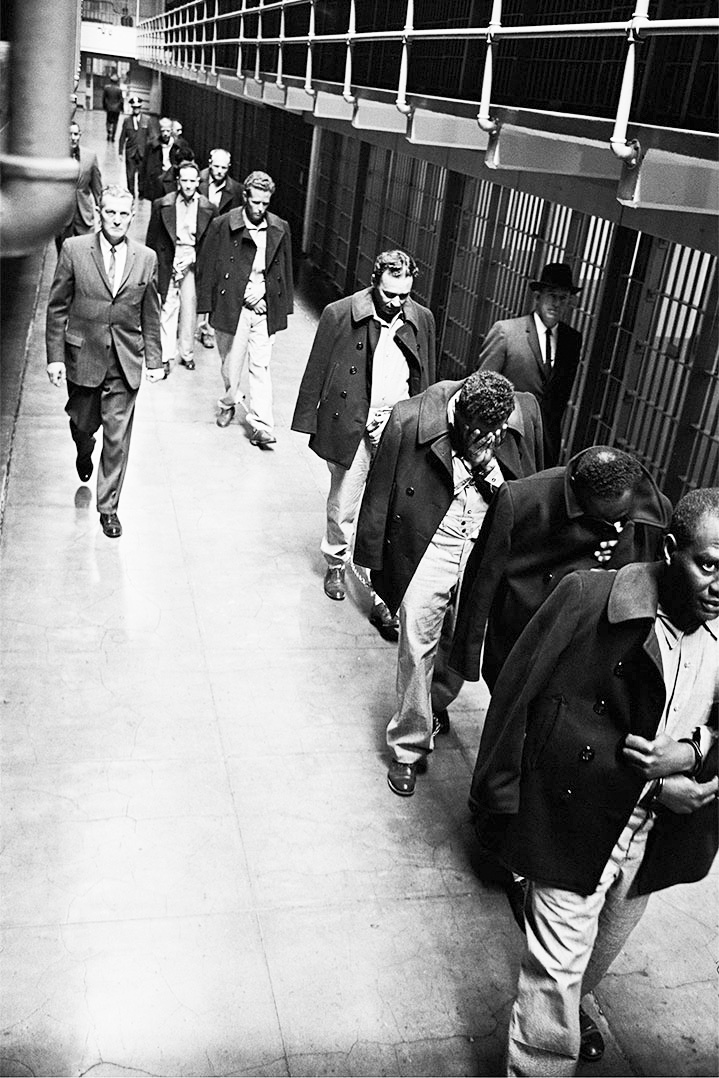
1. Golden Gate Bridge
As the #1 San Francisco Landmark, More Than Just Parks has selected one of the world’s most beautiful bridges. Is there a more iconic landmark associated with the City of the Bay than the Golden Gate Bridge? We don’t think so.
The idea for a bridge across the Golden Gate Strait, which connects San Francisco Bay to the Pacific Ocean, was first proposed in the 19th century. However, it wasn’t until the 1920s that serious plans for the bridge began to take shape.
In 1933, construction began on the Golden Gate Bridge, which was designed by engineer Joseph Strauss and architect Irving Morrow. The project was a massive undertaking that employed thousands of workers and involved a number of engineering and construction challenges, including the strong winds and currents in the Golden Gate Strait.
The bridge was built using a suspension design, with two massive towers and a main span of over 1.7 miles. The bridge’s distinctive orange color was chosen both for its visibility in the foggy San Francisco Bay and as a nod to the surrounding natural environment.
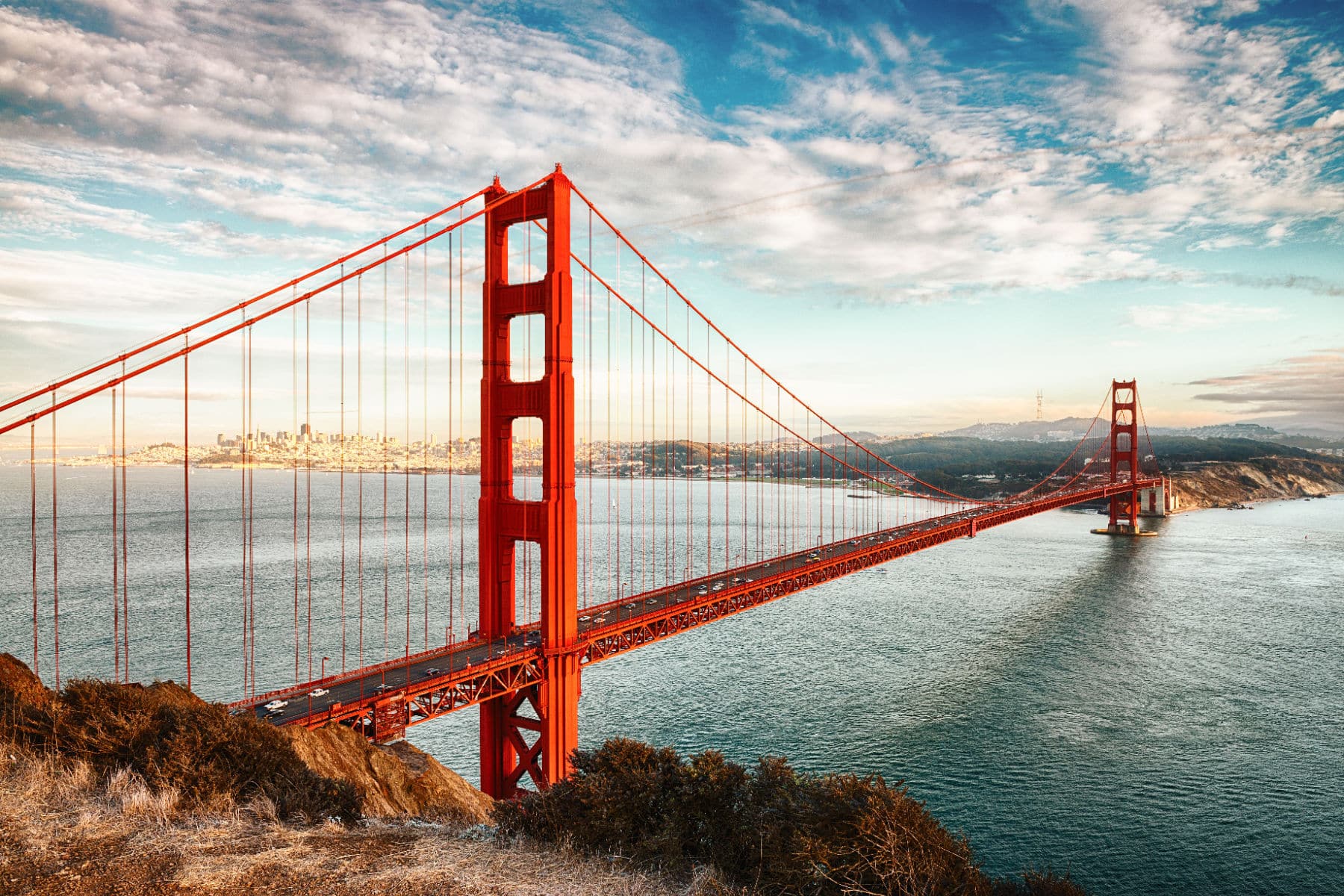
The Bridge Was An Instant Sensation
The Golden Gate Bridge was completed in 1937, and opened to the public on May 27 of that year. The bridge was an instant sensation, drawing huge crowds and receiving widespread acclaim for its beauty and engineering marvel.
Over the years, the Golden Gate Bridge has played an important role in San Francisco’s history and culture. It has been featured in numerous films, TV shows, and works of literature, and has become a symbol of San Francisco and the American West.
Today, the bridge is a major tourist attraction, with millions of visitors each year, and remains one of the most beloved and recognizable landmarks in the world.
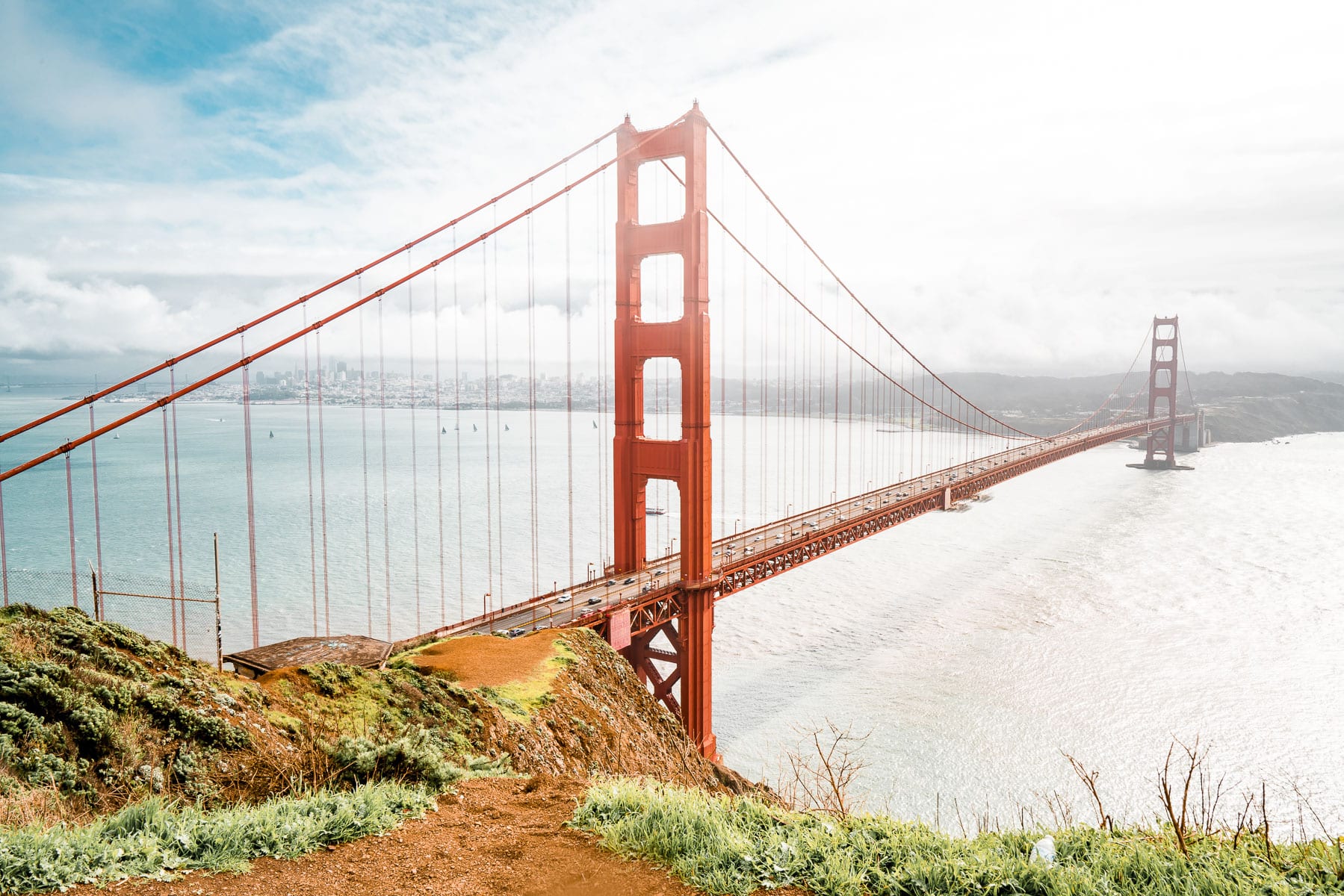
Map Of San Francisco Landmarks
List Of San Francisco Landmarks
- Golden Gate Bridge
- Alcatraz Island
- Fisherman’s Wharf
- Palace Of Fine Arts
- The Presidio
- Fort Point National Historic Site
- Lombard Street
- San Francisco Maritime National Historical Park
- Chinatown
- Coit Tower and Telegraph Hill
- San Francisco Museum Of Modern Art
- Ghirardelli Square
- San Francisco Opera House
- Grace Cathedral
- The Painted Ladies
Why Trust Us About San Francisco Landmarks?
We’re Jim Pattiz and Will Pattiz, collectively known as the Pattiz Brothers (and sometimes as the “Parks Brothers”).
You should probably know that we don’t just make this stuff up out of thin air. We absolutely LOVE America’s public lands and have spent our entire adult lives bringing these places to life through our amazing short films.
We’ve worked with the National Park Service, the Department of Interior, USDA, U.S. Forest Service, and more for years creating films on important places and issues. Our work has been featured in leading publications all over the world and even some people outside of our immediate family call us experts on the national parks.
And, in 2018, our father – having spent a lifetime teaching history – joined us so that he could help us to tell the incredible stories behind these amazing places.
Meet The Parks Brothers
We Hope You’ll Join Our Journey

Our goal here at More Than Just Parks is to share the beauty of America’s national parks and public lands through stunning short films in an effort to get Americans and the world to see the true value in land conservation.
We hope you’ll follow our journey through the parks and help us to keep them the incredible places that they are. If you’re interested in joining the adventure then sign up below!

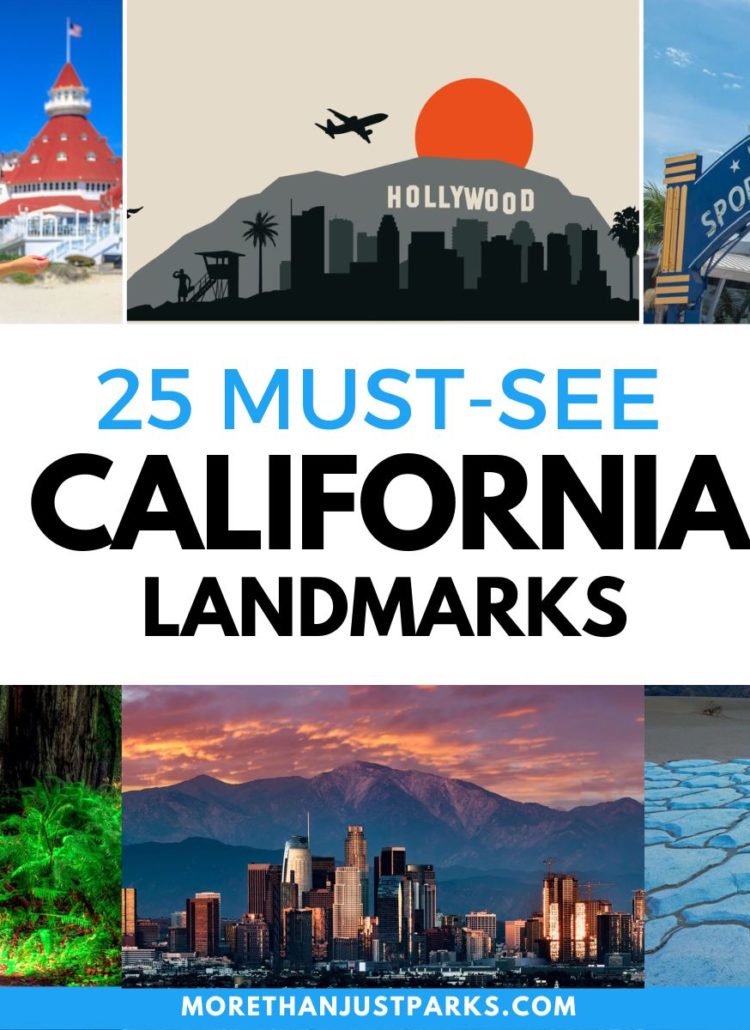

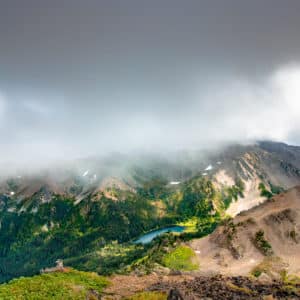

Leave a Reply